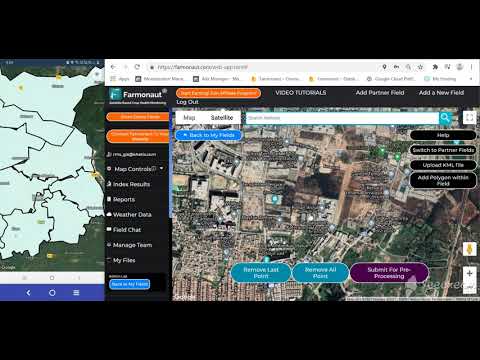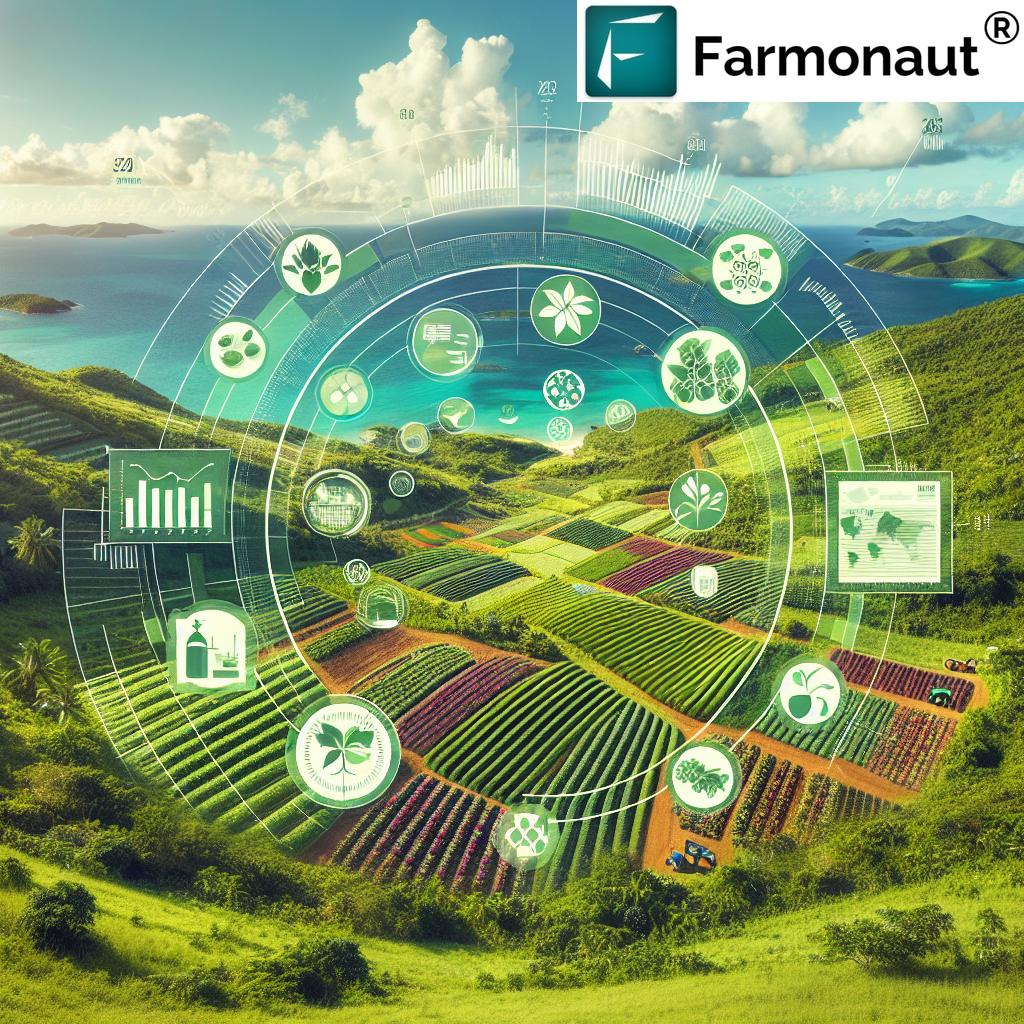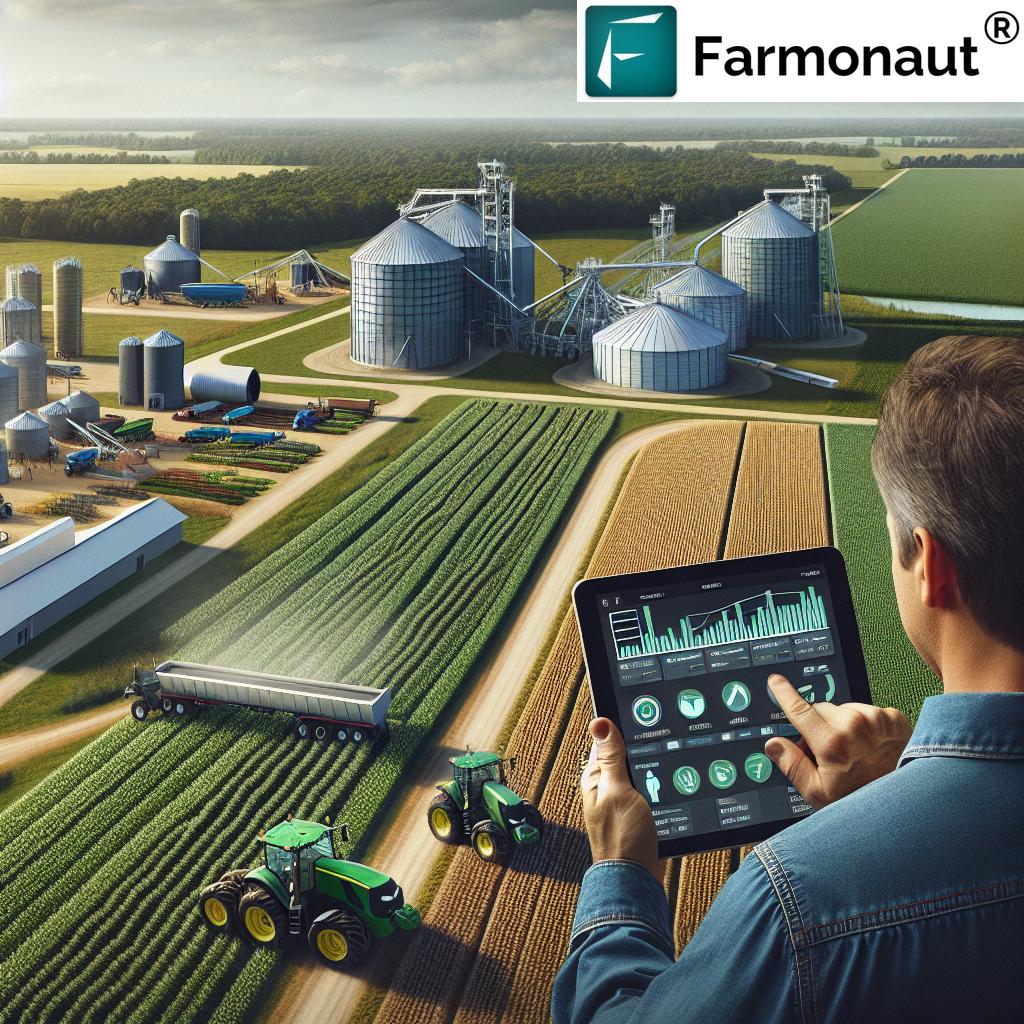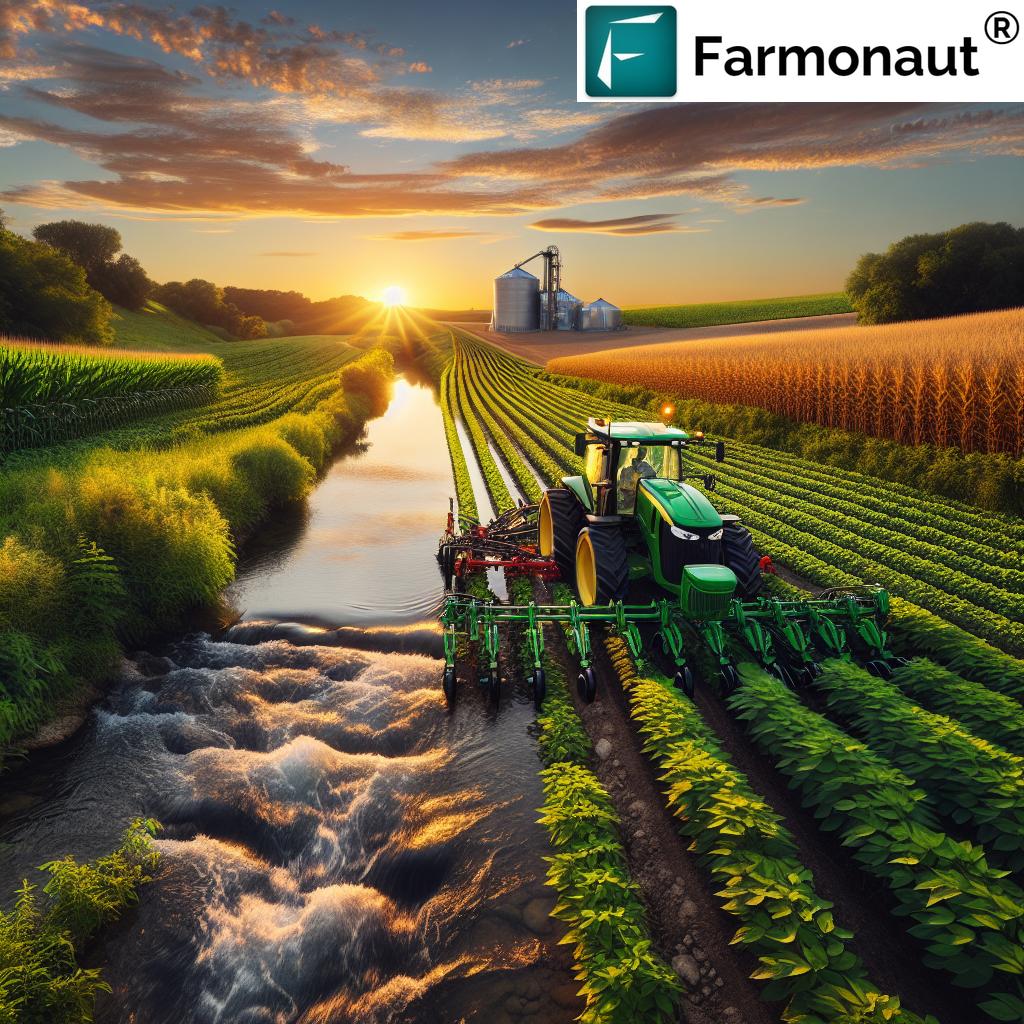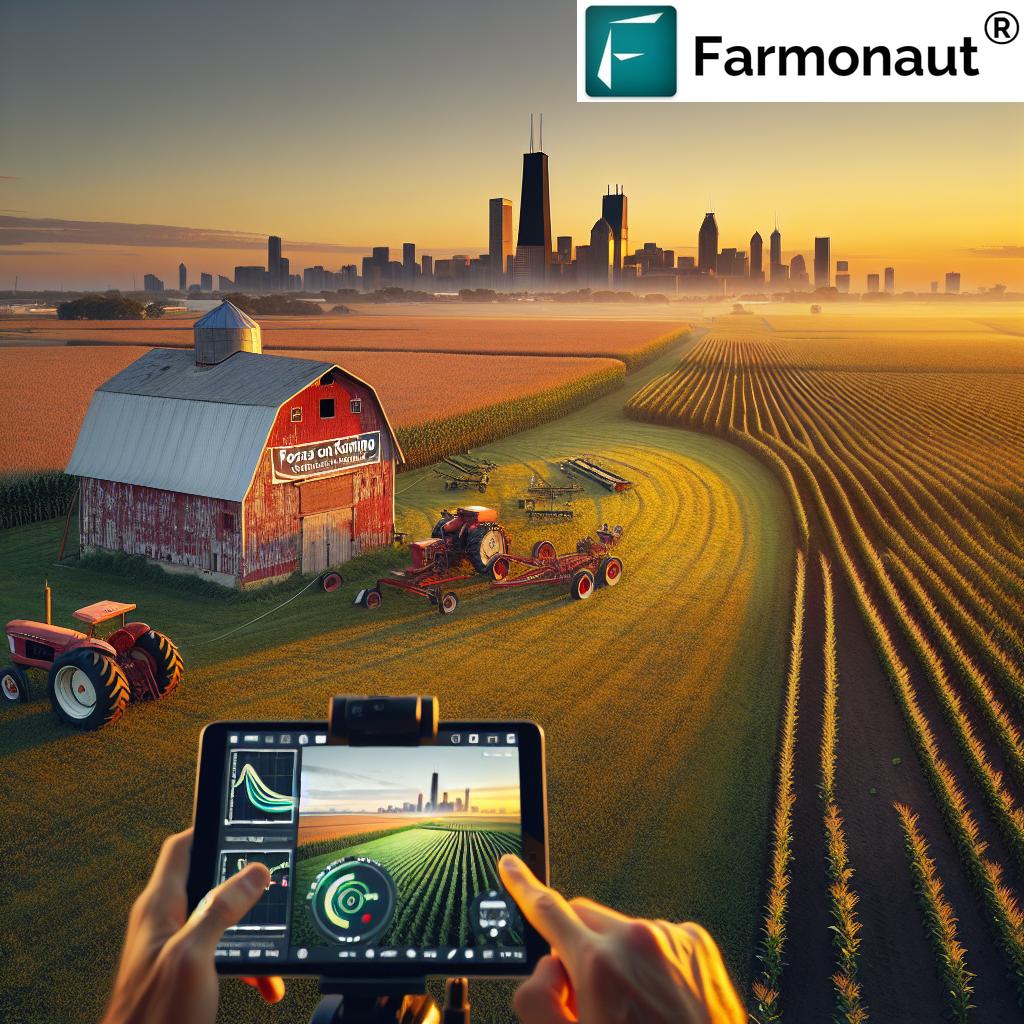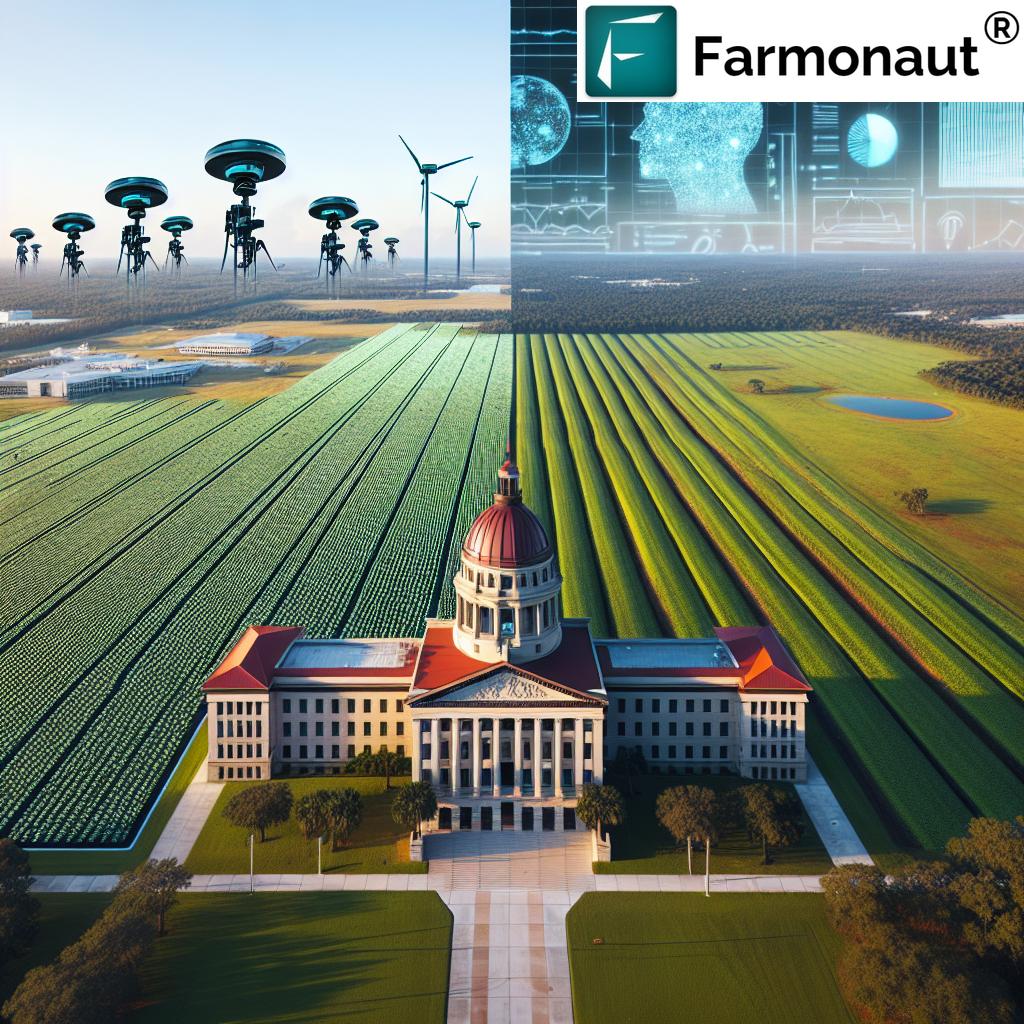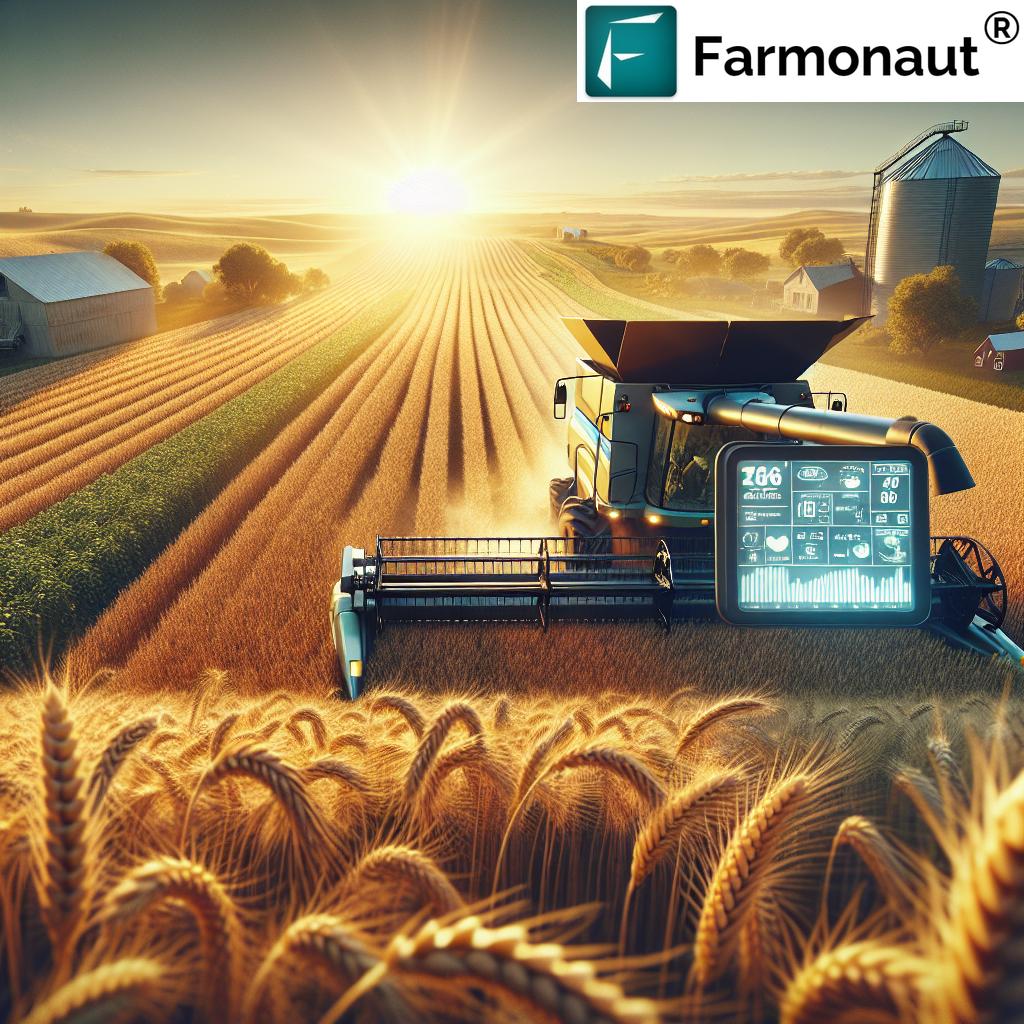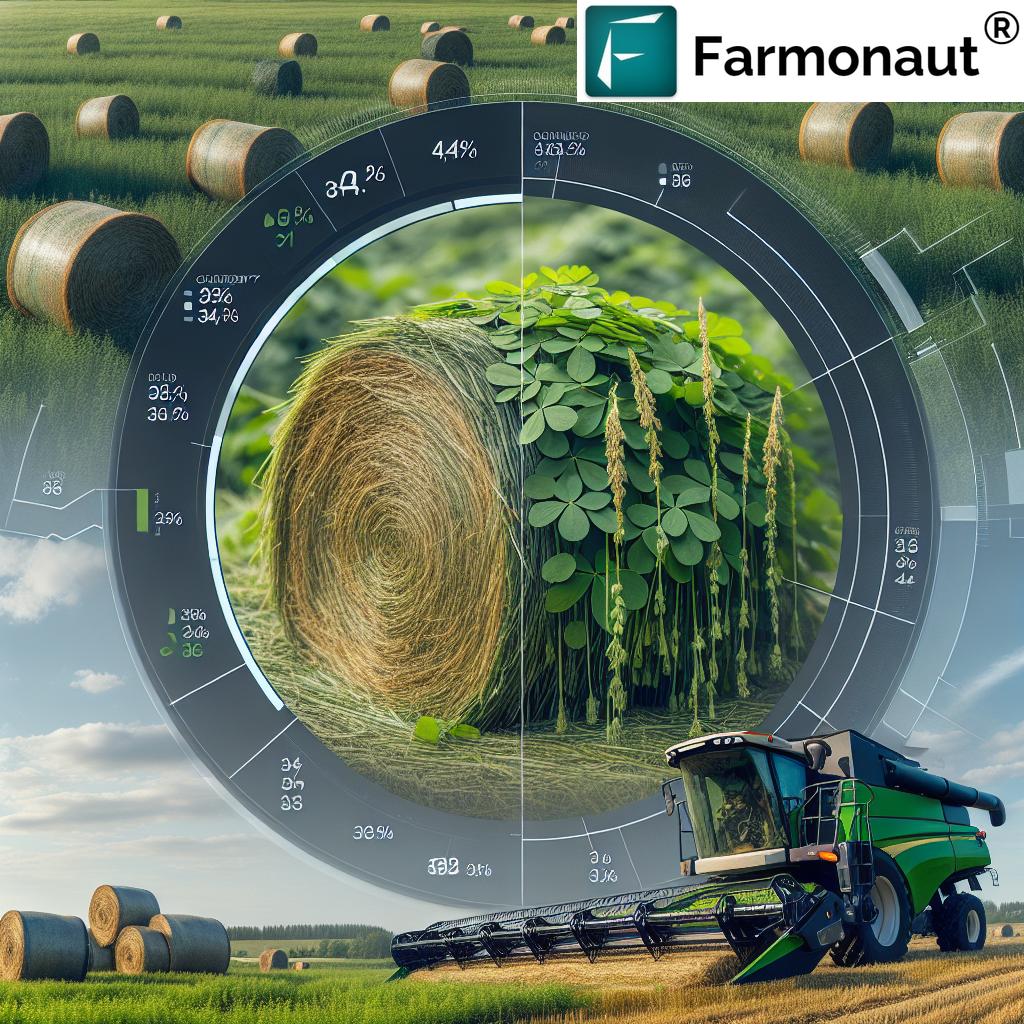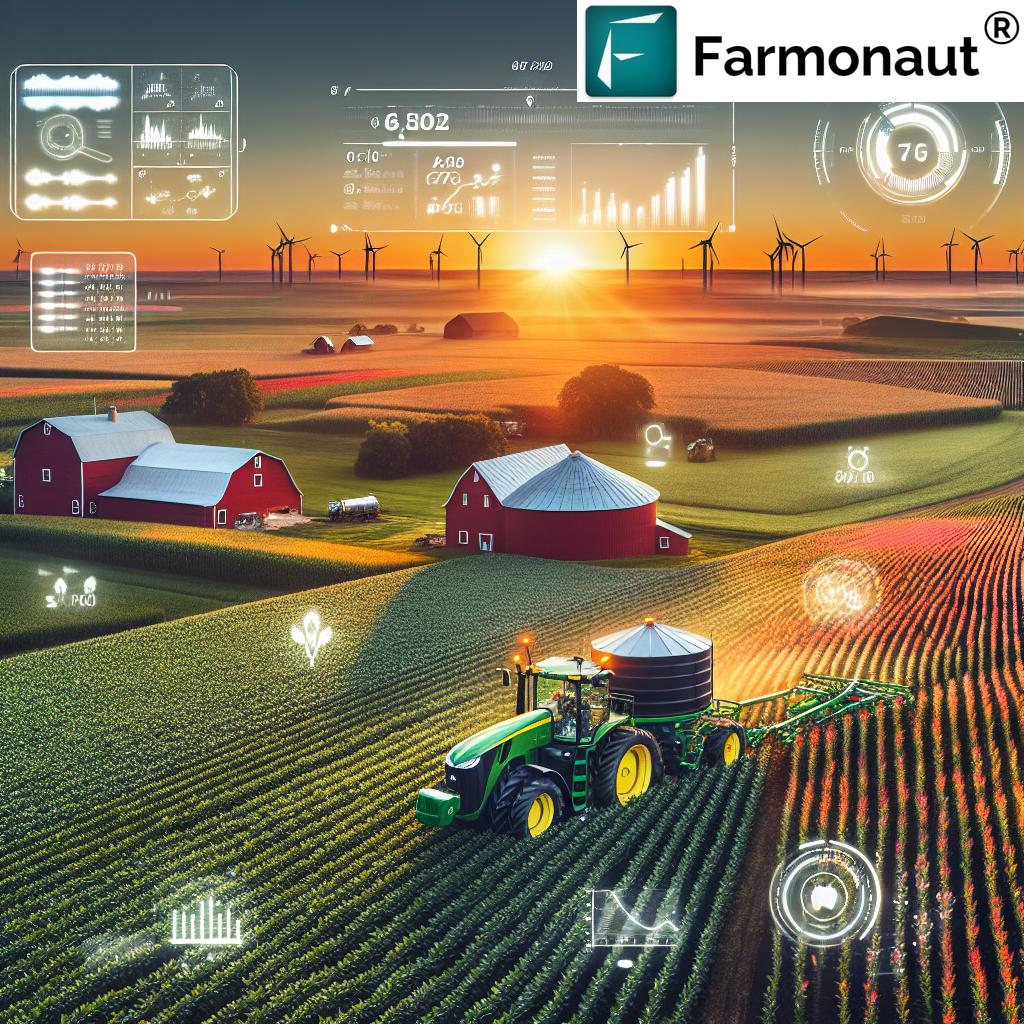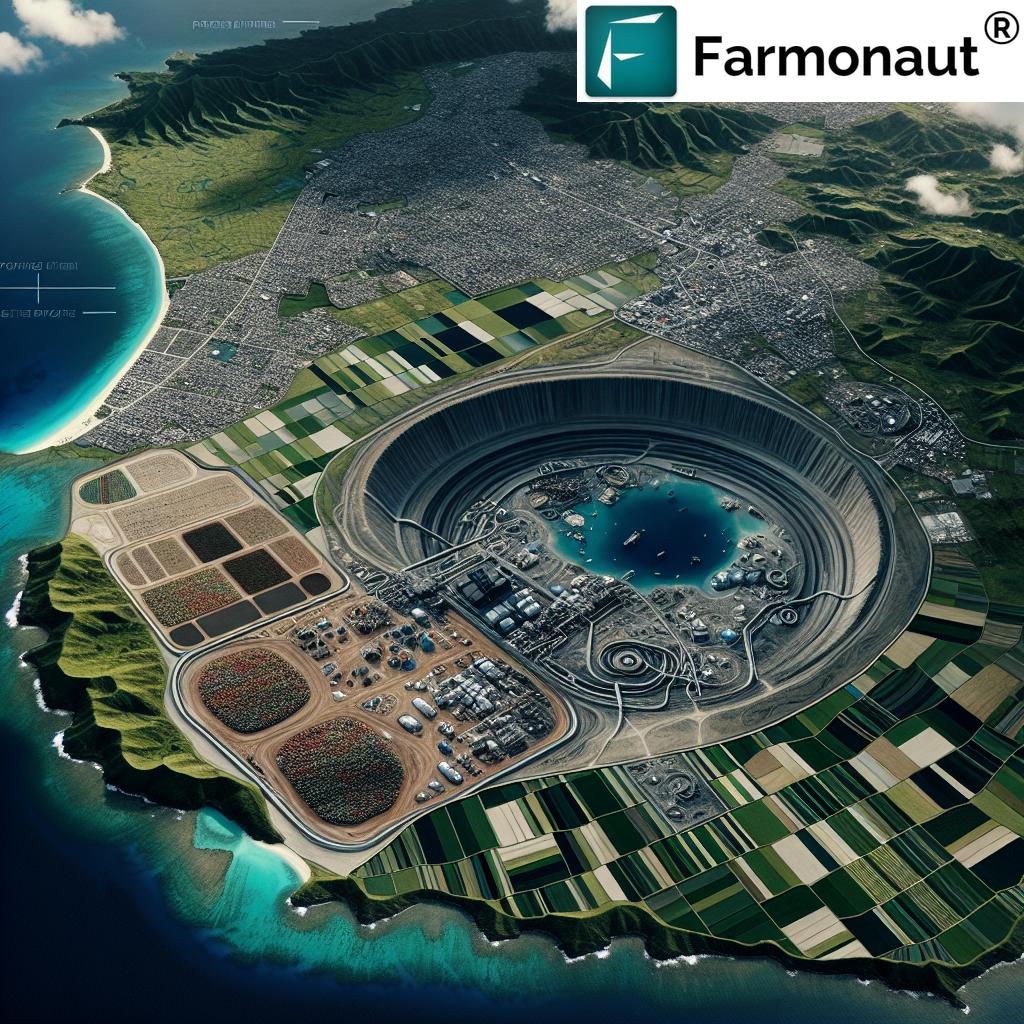Revolutionizing Oregon’s Corn Harvest: Precision Agriculture Trends and Smart Farming Solutions for 2024
“Precision agriculture technologies can increase crop yields by up to 30% while reducing water usage by 20-50%.”
As we conclude another bountiful corn harvest season in Oregon, we find ourselves at the forefront of an agricultural revolution. The year 2024 has ushered in a new era of farming, where precision agriculture trends and modern farming equipment are reshaping the landscape of our corn fields. In this comprehensive guide, we’ll explore how cutting-edge technologies and smart farming solutions are transforming every aspect of corn production, from planting to harvest.

The Evolution of Corn Harvesting in Oregon
Oregon’s corn industry has long been a vital component of our agricultural sector. However, the challenges posed by climate change, resource scarcity, and market demands have necessitated a shift towards more efficient and sustainable farming practices. This is where precision agriculture and smart farming solutions come into play, offering innovative ways to optimize crop yield, reduce costs, and minimize environmental impact.
Let’s delve into the key trends and technologies that are revolutionizing Oregon’s corn harvest in 2024:
1. Satellite-Based Crop Monitoring
One of the most significant advancements in precision agriculture is the use of satellite technology for crop monitoring. Companies like Farmonaut are at the forefront of this innovation, providing farmers with real-time insights into their corn fields. Through their advanced platform, accessible via web app, Android, and iOS applications, farmers can now track various aspects of their corn crops with unprecedented accuracy.
- Vegetation health indices (NDVI)
- Soil moisture levels
- Pest and disease detection
- Crop growth stage analysis
This wealth of data enables Oregon’s corn farmers to make informed decisions about irrigation, fertilizer application, and pest management, ultimately leading to optimized crop yields and reduced resource wastage.
2. AI-Powered Advisory Systems
Artificial Intelligence (AI) is playing an increasingly crucial role in modern farming. In 2024, Oregon’s corn farmers are benefiting from AI-driven advisory systems that provide personalized recommendations based on a multitude of factors. These systems analyze data from various sources, including satellite imagery, weather forecasts, and historical crop performance, to generate actionable insights.
For instance, Farmonaut’s Jeevn AI advisory system offers:
- Customized irrigation schedules
- Precise fertilizer recommendations
- Early warning systems for potential pest infestations
- Harvest timing optimization
By leveraging these AI-powered insights, corn farmers in Oregon can make data-driven decisions that significantly improve their crop yields and overall farm efficiency.
3. Precision Planting and Seeding
The foundation of a successful corn harvest begins with precise planting. In 2024, Oregon farmers are utilizing advanced planting equipment that combines GPS technology with variable rate seeding capabilities. This allows for:
- Optimal seed spacing and depth
- Variable planting rates based on soil conditions
- Reduced seed waste and improved germination rates
- Enhanced crop uniformity
These precision planting techniques not only improve corn yield potential but also contribute to more efficient use of resources throughout the growing season.
4. Smart Irrigation Systems
Water management is critical for corn production, especially in regions of Oregon prone to drought. Smart irrigation systems have become indispensable tools for corn farmers in 2024. These systems integrate data from soil moisture sensors, weather forecasts, and crop water requirements to deliver precisely timed and measured irrigation.
Benefits of smart irrigation include:
- Water conservation
- Reduced energy costs for pumping
- Improved crop health through optimal moisture levels
- Decreased risk of water-related stress on corn plants
By adopting these advanced irrigation techniques, Oregon’s corn farmers are not only increasing their yields but also contributing to more sustainable water use practices.
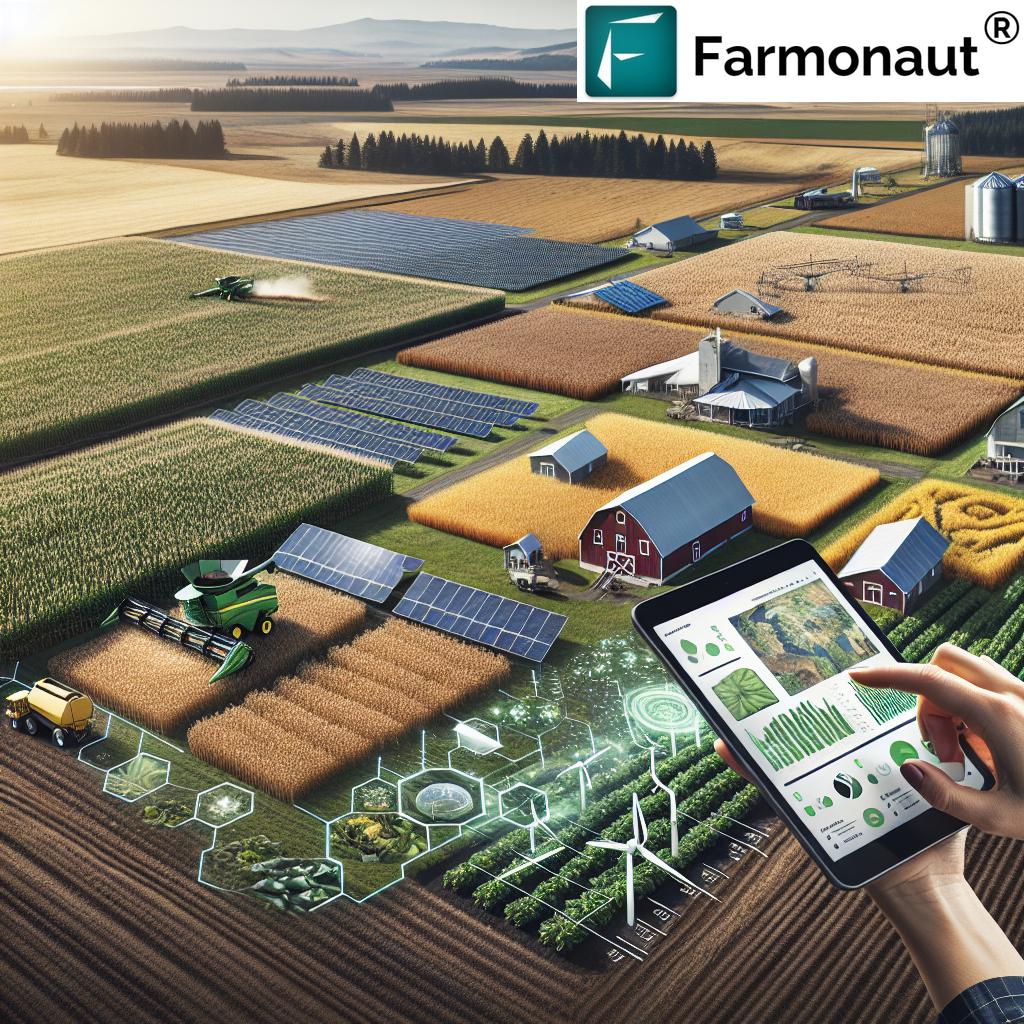
5. Variable Rate Technology (VRT) for Fertilizer and Pesticide Application
Variable Rate Technology has revolutionized the way fertilizers and pesticides are applied to corn fields. In 2024, Oregon farmers are using VRT systems that adjust application rates in real-time based on precise field data. This technology ensures that:
- Fertilizers are applied only where needed and in the right amounts
- Pesticides are used more efficiently, reducing environmental impact
- Input costs are optimized without compromising crop health
- Soil health is maintained through balanced nutrient management
The adoption of VRT has led to significant reductions in chemical inputs while maintaining or even improving corn yields across Oregon.
“Smart farming solutions have helped reduce chemical inputs in agriculture by 10-20% globally, promoting sustainable practices.”
6. Automated Harvesting Equipment
The corn harvest itself has been transformed by the latest innovations in combine harvester technology. In 2024, Oregon farmers are utilizing state-of-the-art harvesting equipment that features:
- Automated steering and guidance systems
- Real-time yield monitoring and mapping
- Intelligent threshing and separation mechanisms
- Automated grain quality sensors
These advanced harvesters not only increase the speed and efficiency of the corn harvest but also provide valuable data that can be used to inform future planting and management decisions.
Farm Management Software: The Digital Backbone of Modern Corn Production
Central to all these technological advancements is the role of farm management software. These comprehensive platforms serve as the digital nerve center for Oregon’s corn farms, integrating data from various sources and providing a unified interface for farm operations. In 2024, leading farm management software solutions offer:
- Real-time field monitoring and analytics
- Equipment tracking and maintenance scheduling
- Inventory management for seeds, fertilizers, and pesticides
- Financial planning and budgeting tools
- Compliance management for regulatory requirements
Farmonaut’s platform, for instance, provides a suite of tools that enable corn farmers to manage their operations more efficiently. From satellite-based crop monitoring to AI-powered advisory services, these software solutions are essential for maximizing productivity and profitability in modern corn farming.
Sustainable Agriculture Practices in Corn Production
As we look to the future of corn farming in Oregon, sustainability is at the forefront of agricultural innovation. The precision agriculture trends and smart farming solutions we’ve discussed are not just about increasing yields – they’re also about promoting more sustainable farming practices. Here are some key sustainability initiatives being adopted by corn farmers in 2024:
- Cover cropping and crop rotation to improve soil health
- Reduced tillage practices to minimize soil erosion
- Integrated pest management to decrease reliance on chemical pesticides
- Water conservation through precision irrigation
- Carbon sequestration techniques to offset greenhouse gas emissions
These practices, combined with the data-driven approach of precision agriculture, are helping Oregon’s corn farmers reduce their environmental footprint while maintaining high productivity levels.
Agricultural Market Insights: The Impact of Technology on Corn Production
The adoption of precision agriculture and smart farming solutions is not just changing how corn is grown in Oregon – it’s also impacting the broader agricultural market. Here are some key insights into how these technological advancements are shaping the corn industry:
- Increased production efficiency is leading to more stable corn supplies
- Data-driven farming is enabling better crop quality and consistency
- Improved traceability is opening up new market opportunities, especially in premium and organic sectors
- Reduced input costs are helping farmers maintain profitability despite market fluctuations
- Sustainable farming practices are meeting growing consumer demand for environmentally friendly products
As these trends continue to evolve, we can expect to see further changes in how corn is produced, marketed, and consumed both locally in Oregon and in the broader global market.
The Role of Farmonaut in Oregon’s Corn Revolution
In the landscape of agricultural innovation, Farmonaut stands out as a key player in driving the precision agriculture revolution in Oregon’s corn industry. Their suite of tools and services is helping farmers embrace the future of agriculture:
- Satellite-based crop monitoring for real-time insights
- AI-powered advisory systems for data-driven decision making
- Blockchain-based traceability solutions for supply chain transparency
- Carbon footprint tracking to support sustainable farming practices
By leveraging Farmonaut’s technology, corn farmers in Oregon are able to optimize their operations, reduce costs, and improve yields while also contributing to more sustainable agricultural practices.
Looking Ahead: The Future of Corn Farming in Oregon
As we look towards the future of corn farming in Oregon, it’s clear that the integration of precision agriculture and smart farming solutions will continue to play a crucial role. Here are some trends we expect to see in the coming years:
- Increased adoption of autonomous farming equipment
- Further integration of IoT devices for real-time field monitoring
- Advanced predictive analytics for crop yield forecasting
- Expansion of vertical farming techniques for corn production
- Development of drought-resistant corn varieties through gene editing
These advancements will not only help Oregon’s corn farmers meet the growing demand for food but also address the challenges posed by climate change and resource scarcity.
Precision Agriculture Trends in Oregon’s Corn Harvest 2024
| Farming Aspect | Traditional Method | Precision Agriculture Method | Estimated Yield Improvement | Estimated Cost Savings |
|---|---|---|---|---|
| Soil Analysis | Manual sampling, infrequent | Satellite and drone-based imaging, real-time | 10-15% | 20-30% |
| Seed Planting | Uniform planting rates | Variable rate seeding based on soil conditions | 5-10% | 10-20% |
| Irrigation | Scheduled, uniform application | Smart irrigation systems with soil moisture sensors | 15-20% | 30-40% |
| Fertilizer Application | Blanket application | Variable rate technology, targeted application | 10-15% | 25-35% |
| Pest Management | Scheduled spraying | AI-driven early detection and targeted treatment | 5-10% | 20-30% |
| Harvest Timing | Based on visual inspection | Data-driven optimal harvest window prediction | 5-8% | 15-25% |
| Equipment Efficiency | Manual operation | Automated, GPS-guided machinery | 3-5% | 10-15% |
Conclusion: Embracing the Corn Harvest Revolution
The revolution in Oregon’s corn harvest is well underway, driven by precision agriculture trends and smart farming solutions. From satellite-based crop monitoring to AI-powered advisory systems, these technologies are transforming every aspect of corn production. As we move forward, the integration of these innovative tools will be crucial for meeting the challenges of food security, climate change, and resource conservation.
For corn farmers in Oregon, embracing these new technologies is not just about staying competitive – it’s about securing a sustainable and profitable future for agriculture in our state. By leveraging the power of data, automation, and artificial intelligence, we can create a more resilient and productive corn industry that benefits farmers, consumers, and the environment alike.
As we look to the future, it’s clear that the corn fields of Oregon will continue to be at the forefront of agricultural innovation. By staying informed about the latest trends and technologies, and partnering with innovative companies like Farmonaut, our farmers can ensure that Oregon remains a leader in corn production for generations to come.
FAQs
- What is precision agriculture?
Precision agriculture is a farming management concept that uses technology to observe, measure, and respond to variability in crops. It aims to optimize returns on inputs while preserving resources. - How does satellite-based crop monitoring work?
Satellite-based crop monitoring uses multispectral imagery to assess various aspects of crop health, including vegetation indices, soil moisture, and pest infestations. This data is analyzed to provide farmers with actionable insights. - What are the benefits of using AI in corn farming?
AI in corn farming can provide personalized recommendations for irrigation, fertilization, and pest management, leading to improved crop yields, reduced input costs, and more sustainable farming practices. - How does variable rate technology improve fertilizer application?
Variable rate technology adjusts the amount of fertilizer applied based on specific field conditions, ensuring that crops receive the right amount of nutrients while reducing waste and environmental impact. - What role does blockchain play in corn production?
Blockchain technology can enhance traceability in the corn supply chain, providing transparency from farm to consumer and helping to verify sustainable farming practices.




